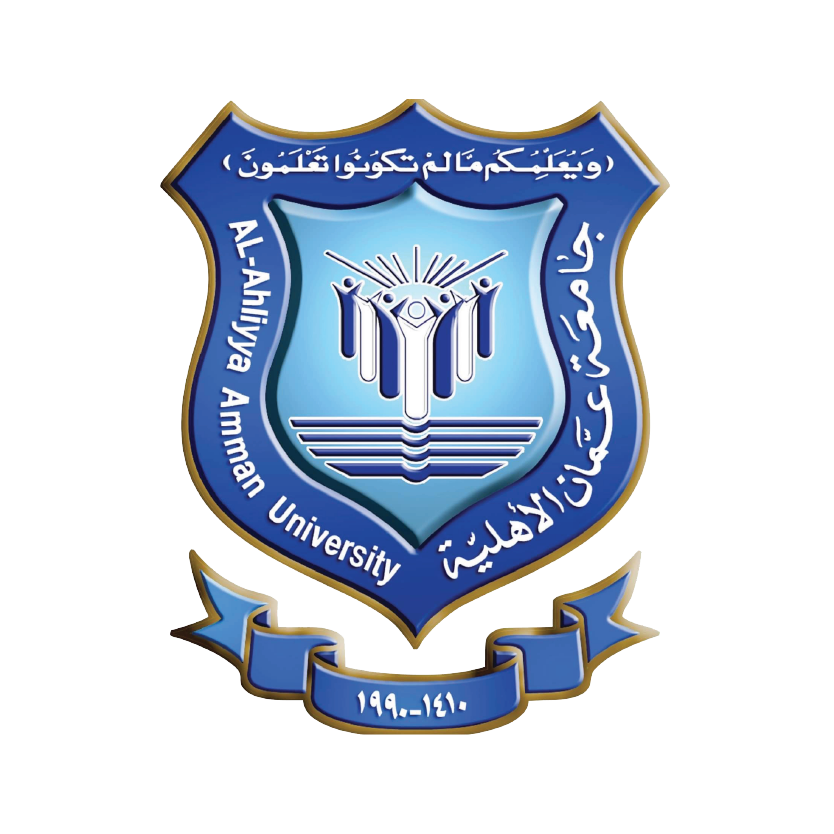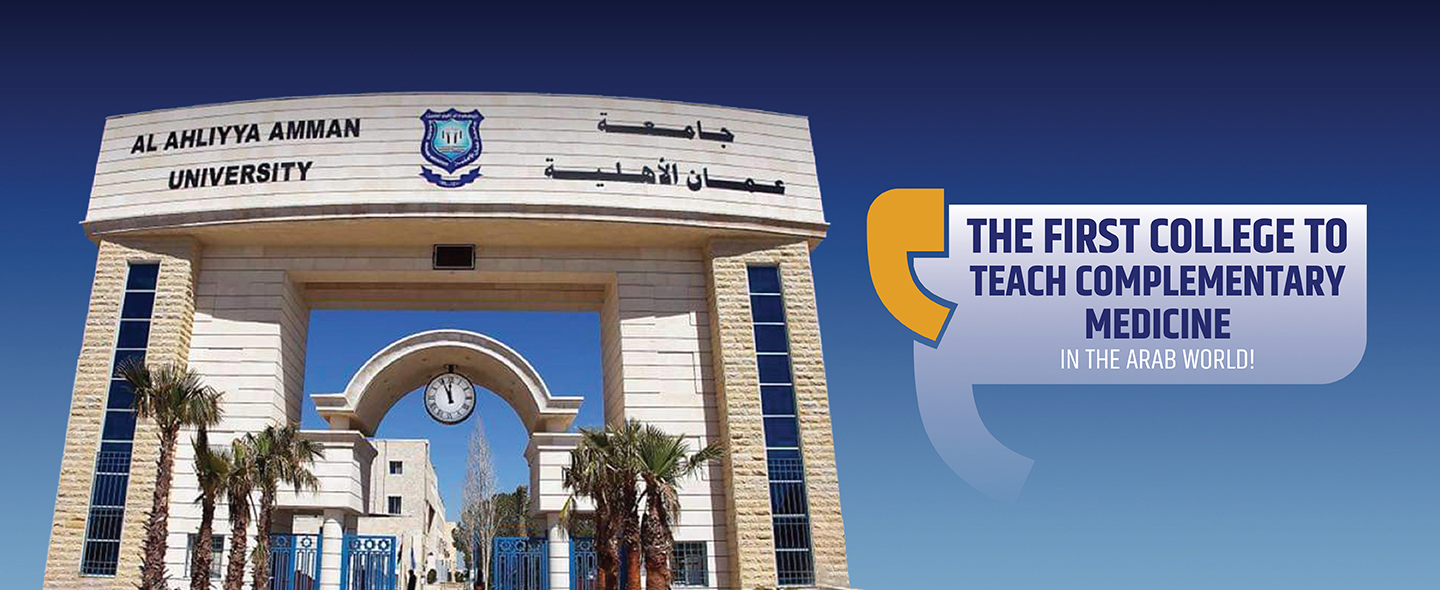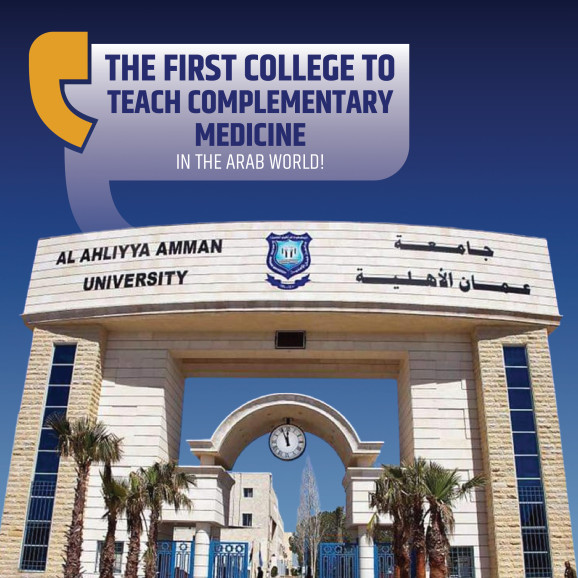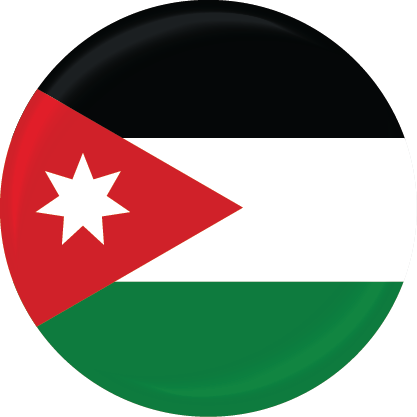Register Now! Please, fill in your personal details and we will contact you shortly
Osteopathy
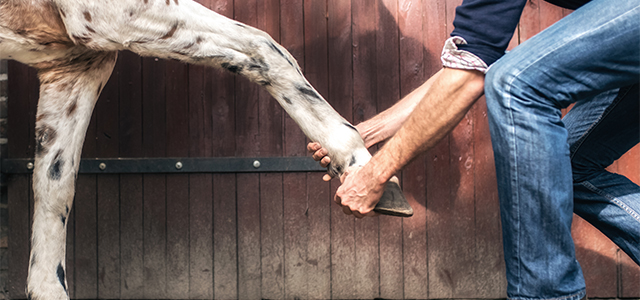
Audience
About the program
The course in equine osteopathy will teach you how to assess, osteopathically diagnose and treat musculoskeletal conditions in horses and ponies.
The main osteopathic approach is based on ‘classical’ osteopathy and is fundamentally a structural approach to manipulation involving ‘long lever’ rather than ‘short lever’ manipulation. The techniques involve joint and muscle mobilisation and articulation. This is a tried and tested method for treating musculoskeletal problems in horses.
The classes will involve revision of the anatomy relevant to the structural techniques to be learned.
The main theme of teaching the early techniques will involve:
1) learning/revising the anatomy.
2) Palpating the anatomical structures.
3) articulating the tissues palpated.
We try to instil the idea of ‘Osteopathic intention’, which involves visualising the tissues being palpated and treated. This method ensures an osteopathic input that generates healing and healing energy.
Other essential and necessary subjects will include visual assessment and lameness, equine behaviour and psychology, handling and control of horses and patterns of somatic dysfunction and biomechanics and vertebral manipulation.
The visual assessment at walk and trot gives the osteopath an opportunity to assess the quality of movement and detect lameness. It also helps formulate an early indication of where to begin the structural assessment or target treatment.
Equine psychology and behaviour are essential for a practitioner to remain safe when assessing or treating horses. It also enables the osteopath to apply structural osteopathic techniques effectively and safely.
Learning the patterns of dysfunction, (osteopathic lesions, somatic dysfunction, pathophysiology) in horses explains why horses behave the way they do whilst being handled or ridden. It gives the practitioner a means of explaining to the rider or owner why their horse finds it difficult or impossible to perform certain actions.
This pathophysiology causes some predictable patterns in the horse so learning how to detect these patterns shows the osteopath how to approach and resolve those issues with manipulation.
To properly understand how the patterns of dysfunction affect the horse, a sound knowledge of equine biomechanics is required.
The process of applying osteopathic articulation and joint mobilisation involves learning how to assess and treat every joint in the horse’s body.
We begin with the distal forelimb, starting with the most distal articulations in the foot, and work carefully up the limb to the shoulder, using the anatomy and palpation prior to joint articulation. This involves mobilising both bony and soft tissue, treating muscles, ligaments, tendons, and joints.
The next stage involves the same approach to the hind limb. It is just as important to be able to safely assess and treat the back leg from the most distal tissues up to the hip and pelvis.
The osteopathic approach to the cervical spine is covered next. Each vertebral level in the neck can be palpated, assessed, and treated with joint articulation and manipulation.
The structural approach includes treatment to the thoracic and lumbar spine.
Once the fundamental classical approach to treatment of the horse has been covered, you will learn how to apply direct manipulation.
The techniques include manipulation to the upper cervical spine, side bending adjustment to the Occiput/Atlas (C0/C1), Atlas /Axis in rotation (C1/C2), mid to lower neck (C5), manipulation to the hip, and the Lumbar spine in rotation or side bending. There are also techniques for manipulation to the distal limb (pedal bone/short pastern P2/P3,) and to the shoulder involving decompression to the gleno/humeral joint.
The course will finish with student clinics whereby you will assess and treat a range of horses.
 Certificates
Certificates
(Diploma) Certificate from Al-Ahliyya Amman University – the Training and Consulting Department, the International College of Integrative Medicine (CIM), Dubai Racing Club, Dubai Equestrian Club and the International Organization for Complementary Medicine (CMA) located in London, UK, which qualifies the graduates to work all over the world.
Syllabus
Day 1-2
This typically includes an introduction to the course. This includes registration, an introduction to the key staff and lecturers, health and safety, legal and ethical considerations and an introduction to equine anatomy and anatomy of the forelimb. The practical sessions involve an introduction to correct procedure for handling and management of horses in hand while being treated, safety of students and animals in stables, and horse and stable management for those students with little equestrian experience. There are two practical sessions on palpation, articulation, and mobilisation of the distal forelimb of the horse. We discuss animal osteopathy and the law. Legal and ethical considerations. We finish, as always, with a brief session of student and staff feedback.
Days 3-4
This session builds on the first two days. Anatomy and differential considerations of the axial skeleton, forelimb, and hindlimb of the horse. Articulation, and mobilisation of the equine forelimb and the hindlimb. The course is fundamentally structural, based on classical osteopathy. Practical sessions build session on session. Student and staff feedback.
Days 5-6
This typically involves building on the principles of classical osteopathy. Revision of the equine forelimb and hindlimb, leading on to articulation of the cervical, thoracic, and lumbar spine, gait analysis and visual assessment of horses at walk and trot with an introduction to lameness. Student and staff feedback.
Days 7-8
This session continues to build on the structural approach to equine general treatment (GOT, BA, OAB). Students commence ‘whole horse’ treatment. Dissection of the equine forelimb follows study of distal limb pathology. The case history and communication with the veterinary profession. Student and staff feedback.
Days 9-10
This session includes the theory and a practical session on equine soft tissue treatment. Student clinic begins and continues through to the end of the course. Equine general treatment continues with treatment of the whole horse, including initial gait analysis and active assessment. The role of paraprofessional communication and integrated therapy is discussed. Student and staff feedback.
Days 11-12
Typically, this session includes the introduction of pathophysiology and the study of biomechanics and patterns of dysfunction in horses. Reference is made to the structural anomalies discovered during practical sessions and how these patterns fit together in pathophysiology and somatic dysfunction. Work continues with equine general treatment and student clinical practice. The technique sign-off form is introduced. Students may commence the signing off for techniques forming part of the general treatment. Upper cervical manipulation and HVT is introduced, involving short lever and long lever manipulation of the occiput and atlas. The pain gate and osteopathic short lever recoil technique is introduced. Student and staff feedback.
Days 13-14
Manipulation continues, Atlas/axis and mid cervical HVT. Equine coxo/femoral manipulation using the ‘hip-tug’ technique. Clinical practice, full treatment of racehorses in training. Practical ‘sign-off’ continues. Equine conformation and morphology are discussed. The principles of equitation and the effects of the rider on the horse are introduced. Student and staff feedback.
Days 15-16
Manipulation of the equine cervical spine continues. Student clinical practice, follow up full treatment of racehorses in training. Biomechanics of the equine foot and corrective farriery are discussed, along with some of the problems caused by poor or incorrect trimming and shoeing. Technique sign-off continues. Student and staff feedback.
Days 17-18
This session typically involves several practical sessions allowing students to continue to follow up horses they have previously treated in the student clinical practice, and to continue signing off technique. Distal limb manipulation (P2/P3), treatment using fascial release and the IVM are built into practical sessions. Lumbar manipulation. Student and staff feedback.
Days 19-20
This weekend is the culmination of all the principles and practices of osteopathic philosophies and techniques applied to horses. Students will finalise their technique sign-off cards and there would be a workshop to discuss the treatment of horses they have worked with. There is a lecture on setting up in animal practice. Final feedback.
Register & Pay
Dean

Dr. med. Ldo. med. Álvaro Rubio
Citizenship:
Spaniard and German
FIELD OF ACTIVITY
Adult Cardiac Surgery - Cardiac Surgery Consultant
Vascular Surgery - Vascular Surgery Consultant
Pediatric Cardiac Surgery
Intensive Care Medicine
QUALIFICATION
Universitas Extrematurensis, Spain
Justus Liebig University, Germany
Cardiac Surgery Consultant - Bavarian State Chamber of Physicians, Munich/Germany
Vascular Surgery Consultant - Baden-Württemberg State Chamber of Physicians, Freiburg/Germany
Intensive Care Medicine Consultant - Baden-Württemberg State Chamber of Physicians, Freiburg/Germany
ADDITIONAL QUALIFICATION
Specialist in Radiation Protection
Certificate Clinical Homeopathy
MEMBERSHIP - SCIENTIFIC AND PROFESSIONAL SOCIETIES
CSN - Cardiothoracic Surgery Network
BDC - German Professional Association of Surgeons
DGTHG - German Society for Thoracic, Cardiac and Vascular Surgery
Association of Cardiac Surgeons
European Society of Cardiology
INVESTIGATION AWARD
The Pierre Grondin Award 2007
CMA President

Jayney Goddard, MSc, FCMA, FBSLM, Lic.LCCH, Dip.ACH, FRSPH
President - The Complementary Medical Association, London, UK
Jayney Goddard is President of The Complementary Medical Association (The CMA) which is the world's largest professional membership body for complementary medicine (CM), and she is widely regarded as one of the leading experts on complementary medicine and natural healthcare. Jayney has a vast depth of knowledge across the entire field of complementary medicine and can always be relied upon to provide substantiated research data during any interview, lecture or written work.
Jayney is a Fellow of the Royal Society of Medicine and a Fellow of the Royal Society for Public Health. She has a Master of Science post-graduate degree from the University of Central Lancashire and began her doctorate in January.
She was recently awarded the Complementary and Natural Healthcare Expo Award for Outstanding Contribution to Complementary Medicine - which was judged by a panel of respected complementary medical professionals and a group of high-profile captains of industry coming from backgrounds as diverse as banking, insurance and entertainment.
She has a busy practice (UK, USA and Skype) where she works uses a range of complementary medical approaches with her patients, including homeopathy, psychotherapy, nutrition, herbal medicine, Mind/Body medicine and hypno-analysis. Jayney's special clinical interests include auto-immune disease and natural anti-ageing/rejuvenation strategies.
Jayney is editor of "With Our Complements", the Journal of The Complementary Medical Association and she is a high-profile contributor to print and broadcast media.
Jayney is the complementary medical expert for various newspapers and magazines and is a regular guest on television and radio when expert opinion is required on any aspect of complementary medicine and natural health care. Adept at phone-in “open clinic” type broadcasts, Jayney is always a popular guest. She was the Discovery Channel's complementary medicine expert and provided all complementary medical content for the Granada/Boots PLC joint venture "The Wellbeing Channel". A prolific writer, her most recently published books include the international number one bestseller "Rewind Your Body Clock - The Complete Natural Guide to a Happier, Healthier, Younger You (Watkind UK / Penguin USA and Rest of world / Audiobook by WF Howes, narrated by Jayney Goddard).
Jayney has also authored two books on pandemic 'flu: the critically acclaimed "The Survivor's Guide to Swine Flu: The Complementary Medical Approach", "The Survivor's Guide to Bird Flu: The Complementary Medical Approach" and also "Complementary and Alternative Medicine: The Scientific Verdict on What Really Works", edited by Jayney and published by Collins. Jayney also edits The CMA's highly informative weekly e-Newsletter. Jayney writes the monthly Natural Anti-ageing column for Natural Health magazine and is credited by them as "The UK's leading natural anti-ageing guru".
Jayney testified for the USA's "White House Commission on Alternative and Complementary Medicine" in order to help the USA rationalize complementary and alternative medicine and all her recommendations were accepted unanimously. In the UK, Jayney is The CMA representative for the Parliamentary Group for Complementary and Integrated Medicine and she is active globally, assisting governments worldwide to rationalise their approach to ethical, responsible complementary medicine.
Jayney lectures at various medical colleges and to faculty and students at Cambridge University in the UK and the University of Miami School of Medicine in the USA. Jayney has taught, as Visiting Professor, on the Masters course at The Graduate Institute in Connecticut, USA, where faculty colleagues include Dr Bernie Siegel, Professor Rupert Sheldrake and Dr Steve Horowitz.
Jayney's Personal Mission
To raise the profile of Complementary Medicine and Integrative Healthcare so that the public and the conventional medical profession accept that these approaches are a viable health option when delivered by properly trained, professional practitioners and integrative medical doctors.
To create an environment where practitioners of excellence are regarded as professionals - true experts in their field - and are accorded the respect that they so rightly deserve.
To ensure that all those who wish to join the profession can gain access to bona fide CM (complementary medicine) colleges which offer truly excellent training.
To ensure that the public understands what constitutes outstanding complementary medical health care and has ready access to practitioners of excellence.
Memberships:
Fellow; Royal Society of Medicine,
Fellow; Royal Society for Public Health,
Founder and Co-Chair; British Society of Lifestyle Medicine
Advisory Board Member; Health Food Manufacturers Association,
Advisory Board Member; "camexpo",
Advisory Board Member and Founding Contributor; Integrative Healthcare Symposium,
Equity
Accreditation

The college of Integrative Medicine in Al-Ahliyya Amman University - Training and Consulting Department is the first college to teach natural medicine study programs in the Arab world, and is recognized by the Jordanian higher education Council, for it's excellence in Academic studies and research. It's the only college that grants diploma certificates accredited by the Jordanian higher education council.
Students reviews
About The College
The college of Integrative Medicine in Al-Ahliyya Amman University - Training and Consulting Department in collaboration with CIM is the first college in the Arab world offering Natural Medicine studies. is the first private university established in the Hashemite Kingdom of Jordan by a decree of the Ministry of Higher Education and Scientific Research in 1989.
Al-Ahliyya Amman University

Al-Ahliyya Amman University is the first private university established in the Hashemite Kingdom of Jordan by a decree of the Ministry of Higher Education and Scientific Research in 1989. The University opened its doors in 1990 with three faculties namely the Faculty of Law, the Faculty of Arts & Sciences and the Faculty of Administrative & Financial Sciences. In the following year, the Faculty of Pharmacy & Medical Sciences and the Faculty of Engineering were established. In 2001 AAU founded the Faculty of Information Technology and inaugurated the Faculty of Nursing in 2005. In 2010, AAU introduced the Faculty of Architecture and Design which was approved to include Architecture, Graphic and Interior Design specializations. By doing so, the number of faculties became eight offering 29 Bachelor programs. Moreover, the University offered eight Master’s programs the first of which was the Master Program in Law which in 2005 was part of the Graduate Studies. AAU provides students with distinguished Graduate Studies Programs and with distinctive Faculty members. To meet the administrative, financial and technical working needs in the University environment, AAU has provided qualified administrative cadres in various administrations and departments which aim to provide the best services to the university community of students and their parents as well as to the academic staff. Thus, twenty-seven years have passed since the inception of AAU in which it continued providing the local and regional markets with elite graduates who occupied important positions in local and regional institutions whether in the public or private sectors. Moreover, a number of AAU graduates have pursued their Graduate Studies in the most prestigious European and American universities. Additionally, a number of them are working in AAU and other Jordanian, regional and international universities. It is worth mentioning that the number of graduates in the various specializations that AAU offered reached (24.338) male and female students.
Al-Ahliyya Amman University is committed to develop and apply the "Quality Assurance Standards in Higher Education Institutions" and to follow any other adopted quality standards by investing human and physical energies to produce an academically and morally outstanding generation who is able to deal with the requirements of the time and to keep up with the new developments efficiently and effectively. This act aims to meet the needs of students, and to enable the University to play its role in promoting academic research, community services and to depict Jordan as a distinctive educational destination at the regional level.
CMA

The Complementary Medical Association, The world’s biggest & leading association of research, academic training&recognition of colleges & therapists worldwide in the fields of complementary & integrative medicine.
Mission & Objectives
The Complementary Medical Association's (The CMA) primary aim is to promote ethical, responsible, professional complementary medicine to the public and the medical profession.
We believe that by promoting The CMA and its Registered Members & Colleges in all categories, though the media and online in a hugely high-profile manner, we are able to help the public and doctors to realize that complementary and integrative medicine is - when delivered safely and ethically - a viable and highly desirable form of healthcare. In addition, here at the CMA, we are totally dedicated to representing "the professional face of complementary medicine" and by promoting research, education and knowledge in the field, we will help to stimulate demand for the medicine of the 21st century and beyond.
The CMA is great news for professional practitioners, ethical colleges and patients who demand and expect excellence in every aspect of treatment.
What is the CMA?
The CMA is a not-for-profit organization which means that any funds we raise, through membership fees, book, training and product sales or donations are invested straight back into the organization.
A great part of our work consists of referring public and conventional medics alike to CMA registered practitioners so that they can be assured that treatment will be delivered
by a highly qualified, insured practitioner who adheres to a strict Code of Ethics and disciplinary procedure. We call this the "CMA Referrals Scheme".
In addition, we are able to help members of the public who wish to train in the complementary medical field to access our Registered Training Schools and Colleges. We provide assistance to Schools who wish to have their courses Registered and Accredited by the CMA.
We work closely with the conventional medical profession as we ultimately believe that the most important person after all, is the patient, and we believe that by presenting the patient with good, accurate information about complementary medical approaches they can make responsible informed decisions about their own health care. It is important to remember that both complementary and conventional medicine have a great deal to offer - when used appropriately, justifiably and responsibly. Ultimately, the freedom to choose one's own health care is a vital human right which should be protected.
Our History
The CMA was established in early 1993, by Jayney Goddard, in response to the overriding lack of public and medical knowledge about the complementary medical profession. During the initial two years we devoted our time to performing the market research that would indicate whether there could be a viable way of raising the profile of ethical, responsible complementary medicine. It was vital to establish and justify whether "yet another organization" needed to exist in the already saturated complementary medical organization field.
We spent a long time analyzing the entire arena and found that nothing was being done at that time by any membership body or organization to promote practitioners
or training schools in a high profile, professional manner.
Furthermore, at that time, complementary medicine had a very unprofessional profile; somewhat akin to a cottage industry. This was a sorry state of affairs and it became rapidly apparent that The CMA needed to exist if professional complementary medicine were to stand a chance.
Here at The CMA we are a dedicated team of committed professionals (we're all qualified healthcare practitioners) and we are absolutely serious about achieving our mission. We have always had a commitment to making sure that our Members can contact us easily and will always be able to get through to a real person at the end of the phone line. In addition, our e-communications are exceptionally effective and we are able to disseminate important information to our Members extremely rapidly and efficiently.
Where are we now?
The CMA opened its doors to members at the beginning of 1995 and to date, The CMA represents the interests of thousands of practitioners in various categories - including students and 180+ Training Schools/Colleges with additional organizations approaching us regularly. We also have another membership section, "Friends of the CMA" which comprises a variety of supporters, all of whom are keen to support the work of the CMA.
The CMA has a high media profile and we constantly work with major media organizations.
We are committed to cultivating a high media profile, through which we achieve in excess of ten individual media exposures per week including TV, radio, magazines, newspapers and the Internet. Our estimated monthly reach is circa 650,000 individuals.
We are committed to thinking creatively when it comes to promoting our members and we are dedicated to working creatively when promoting our Member's interests - just one example of this is that The CMA has - over the years - even undertaken extremely high-profile promotional campaigns utilizing advertising space on London Underground trains and Docklands Light Railway.
What We Do
q Continuing Professional Development (CPD) Hugely important for us all in this profession. We offer practitioners lots of opportunities to keep their professional skills up-to-date with courses, seminars, ongoing tutorials and more by the leading lectures of UK & Europe.
q Membership ID Card, Certificate
It is vital that practitioners display their CMA certificate within their office or practice rooms to confirm their
Membership of this esteemed organization. We also
12
provide them with an ID card, which many of our Members find useful when on external site visits.
q LondonBoroughsSpecialTreatmentExemptedStatus Certain categories of practitioner are subject to requiring a “Special Treatment License” if they work in London and other cities. These licenses cost up to £1000+ and practicing without one leaves the practitioner open to a fine of up to £5000+. By registering with the CMA, after we approve their professional level and training, they are covered under our umbrella exemption – saving you thousands – and protecting them and their practice.
q CMA weekly e-Newsletter
This fantastically informative email brings practitioners the very latest news and research from around the world on all aspects of complementary medicine, natural health and wellness – and relevant conventional medical findings too.
q CMA Training / Courses
The CMA is dedicated to keeping our Members at the top of their profession, to this end we consistently offer ongoing training – with a particular emphasis on practice and training school development. CMA Members benefit from hugely discounted rates for these courses, compared to non- Members. CMA is an academic supporter of complementary medicine colleges, which meet the high criteria of the CMA, and after examining in-depth the curricula and study conditions that the college grants to students, the CMA grants a certificate of recognition to the college.
q Liaison at governmental level representing All CMA Members
The CMA is a Member of the All-Party Parliamentary Group for Complementary and Integrative Medicine in UK. This means that we are representing practitioners’ interests at Governmental level – and can shape policy within this field to support our Members. CMA Members are allowed to attend these meetings at the House of Commons by arrangement.
q Webinars, Seminars, CPD workshops and further qualifications
The CMA liaises with various respected organization who are offering further training to our Members. If we believe that these trainings are of value, we negotiate special rates for our Members as part of our Membership Benefits package.
In addition to each certificate that the graduates receive from AUEDI, each graduate also receives an international certificate from CMA.
CIM

CIM, The international college, is the leading college of Integrative Medicine worldwide. CIM accomplished a great achievement in recent years by integrating complementary medicine with traditional Western medicine, and this is certainly thanks to the most famous specialists who work at CIM. CIM College has a university atmosphere and includes professional training, exclusively in medical centers and hospitals.
CIM has relations with the most famous universities and colleges of Natural Medicine from all over the world.
At CIM, you will find large classrooms equipped with the latest and newest teaching aids, an advanced computer lab, spacious gardens, resting rooms.
The most important thing at CIM is the family atmosphere and the personalized, individual attention given to students by all lecturers, especially to make learning more comfortable.
CIM relies on qualitative education programs and cares about selecting the best lecturers and giving individual attention to each student.
CIM College has a lot of branches worldwide, on of the most important is a branch in Dubai, and under the direction of the German-Spanish Professor Alvaro Rubio, who is the most famous heart surgeon in the world and also specializes in natural medicine.
The branch in Dubai is considered the 1st college of complementary medicine in the Gulf countries. It offers additional and exclusive study programs, such as complementary medicine for equines, which are taught by the most famous lecturers from London, UK. And the branch of Al-Ahliyya Amman University in Jordan, one of the best universities in the world and the #1 Jordanian university according to The Times ranking in terms of the impact of universities, which is considered the 1st college of integrative medicine in the Arab world. It was established as a new college at the university under joint management by both parties, which makes CIM an international college well-respected all over the world, and the leading college in the world for the last 20 years.
CIM has internal monitoring committees that maintain a high educational level that students enjoy. The college is accredited by all the complementary medicine associations and by the European Natural Medicine Association as well. CIM offers scholarships to many deserving students and offers its graduates the possibility to complete their first academic degree (B.A.).
Every student gets his or her N.D. certificate at the end of their studies, which is considered the highest degree in the field of natural and integrative medicine worldwide. And exclusively for CIM college, each graduate receives a certificate from the Complementary Medical Association - CMA, which is located in London, UK.
The CMA is not only the world leader in academic research and training, but also gives accreditation to colleges and therapists worldwide, making it easier for graduates to work in this field all over the world.
